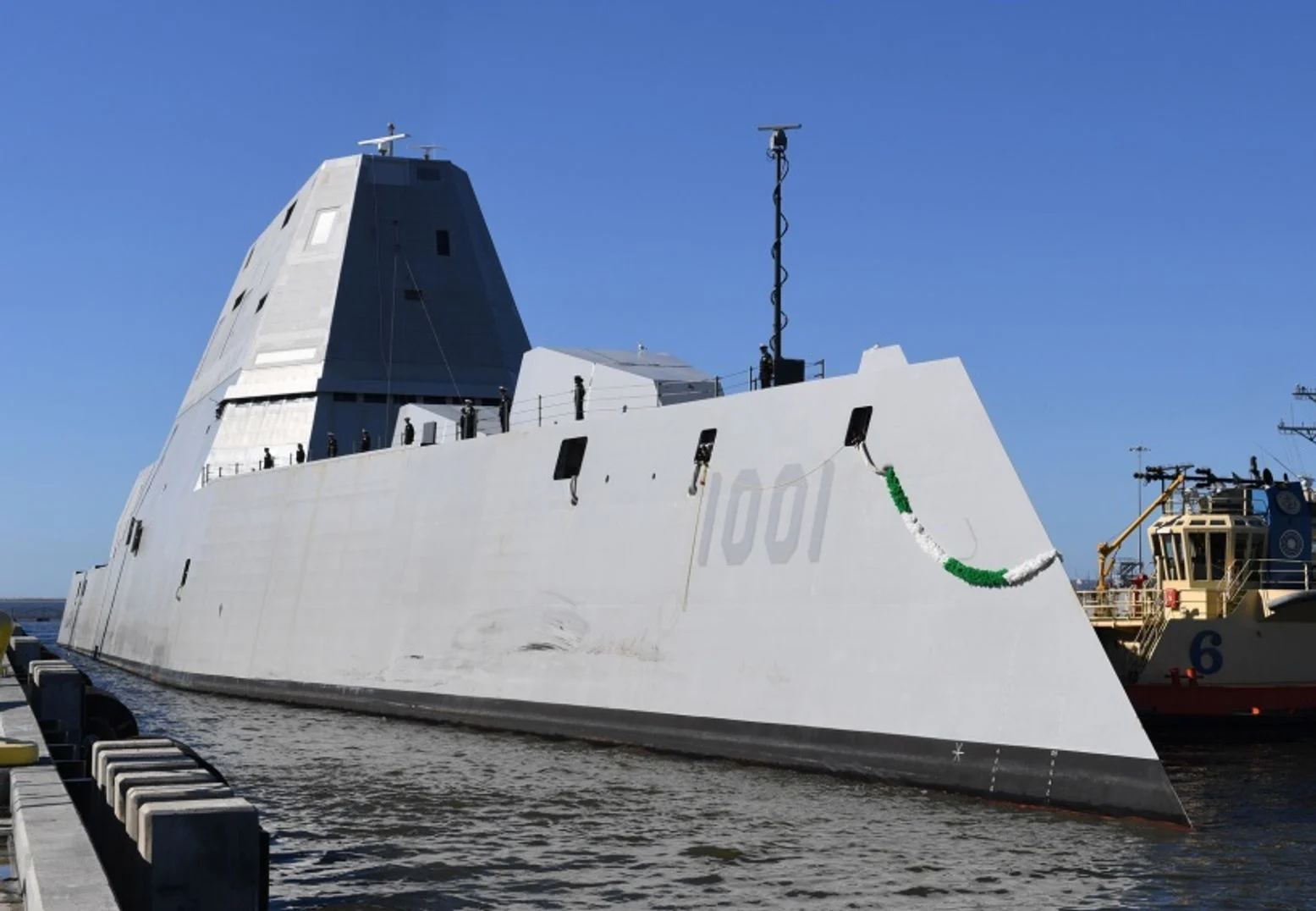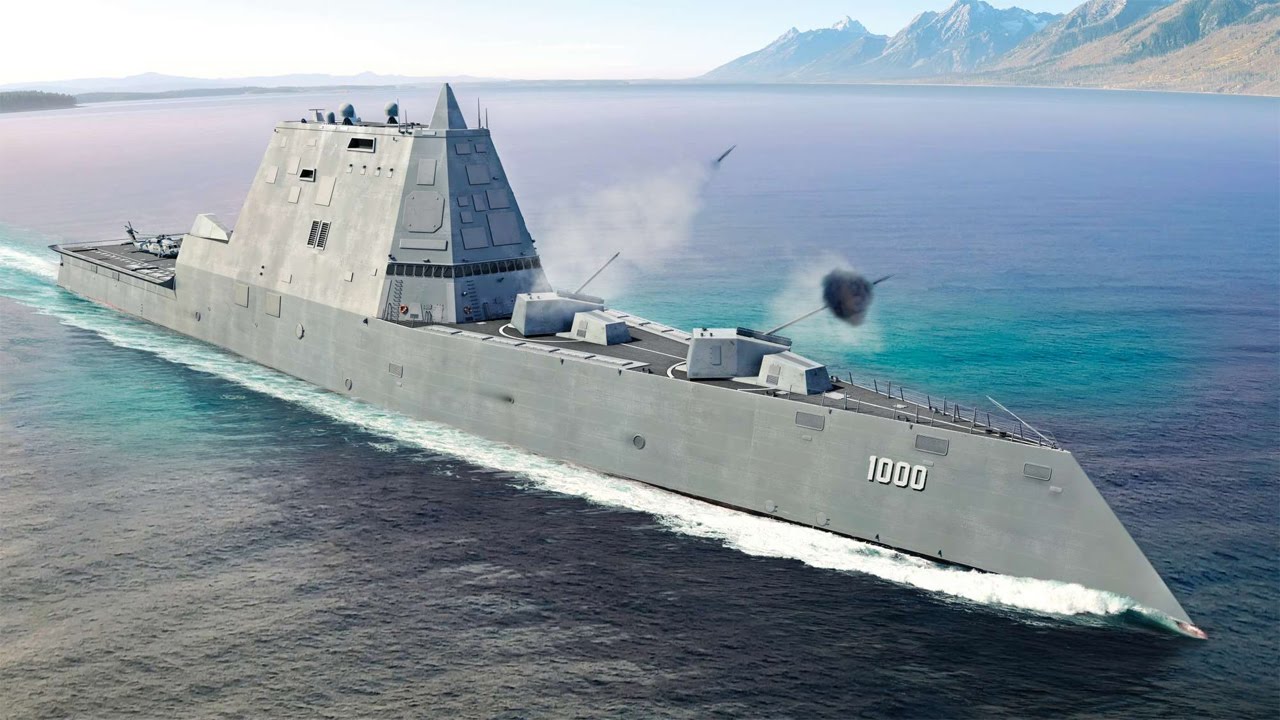
The Zumwalt-class destroyers, also known as the DDG-1000 class, have indeed faced challenges and criticism for cost overruns and changes in their original design. Here are some key points about the Zumwalt-class destroyers:
- Advanced Stealth Capabilities: The Zumwalt-class destroyers were designed to incorporate advanced stealth technologies, making them less visible to radar systems. The angular design, reduced radar cross-section, and other features aimed to give them a significant advantage in terms of survivability and the ability to operate in contested environments.
- Cost Overruns and Reduction in Ship Numbers: The Zumwalt-class program faced significant cost overruns during its development, leading to a reduction in the planned number of ships from 32 to just three. The increased costs and changes in the program’s scope led to scrutiny and criticism regarding the management of the program’s budget.
- Integration of Advanced Technologies: The Zumwalt-class destroyers were intended to serve as technology demonstration platforms, incorporating new systems and technologies such as the Advanced Gun System (AGS), Integrated Power System (IPS), and the Total Ship Computing Environment Infrastructure (TSCEI). These technologies aimed to enhance the ship’s capabilities, firepower, and efficiency.
- Challenges with the AGS and Ammunition Costs: One of the notable issues with the Zumwalt-class destroyers was the Advanced Gun System (AGS), a key feature of their offensive capabilities. The cost and availability of ammunition for the AGS became a concern, leading to a decision to temporarily suspend its use. This, in turn, affected the overall operational effectiveness and mission capabilities of the destroyers.
- Evolving Role and Future Adaptations: The Zumwalt-class destroyers have seen a shift in their envisioned role, moving from a primary focus on surface warfare to a more versatile and multi-mission capability. Efforts are being made to adapt and integrate new weapons systems, such as the Maritime Strike Tomahawk, to enhance their operational capabilities.
It is worth noting that the Zumwalt-class destroyers, despite the challenges faced during their development, still offer advanced capabilities and technologies. However, the program has faced scrutiny for its high costs, changes in scope, and challenges with certain systems. The Navy has been working to address these issues and ensure that the Zumwalt-class destroyers fulfill their intended role in the fleet.
The idea of anything being stealth seems to be like a sure winner in the era of great-power competition against Russia or China. But should big vessels like destroyers or cruisers get any sort of stealthy capability? Does that make sense? That part of the idea when it came to the Zumwalt-class destroyers: Admiral Elmo R. Zumwalt Jr. is a revered name in the annals of U.S. Navy history and rightfully so.
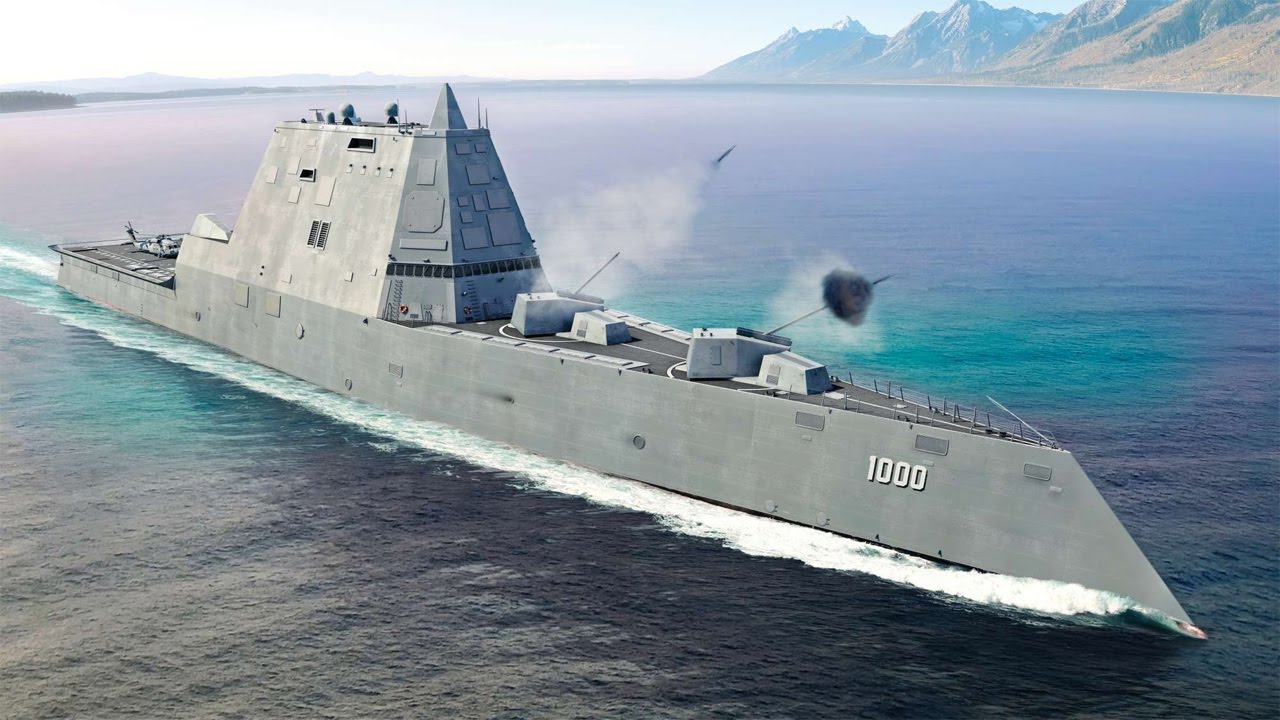
When he was tapped as the 19th Chief of Naval Operations (CNO) in July 1970 at the age of 49, he became the youngest officer ever named to the post. His list of accomplishments during his tenure was quite impressive: the commissioning of the Oliver Hazard Perry-class guided-missile frigates (FFG), and the creation of the Ohio-class ballistic missile submarines (SSBN), and the championing of the F-14 Tomcat as the USN’s replacement for the F-4 Phantom. Unfortunately, the Zumwalt-class destroyers that bear his name don’t appear to be destined for the same level of greatness.
Zumwalt’s Hitting Their Zenith?
The Zumwalt-class destroyers looked promising enough at first. Designed as a stealth ship with radar cross-sections (RCS) comparable to a fishing boat, these stealth capabilities are paradoxically due to a decidedly old-school hull design: the tumblehome. The tumblehome, which involves the hull growing narrower above the waterline, was common on wooden warships and had a flare of popularity with steel warships in the late 19th century until losing its luster during the Russo-Japanese ധąɾ.
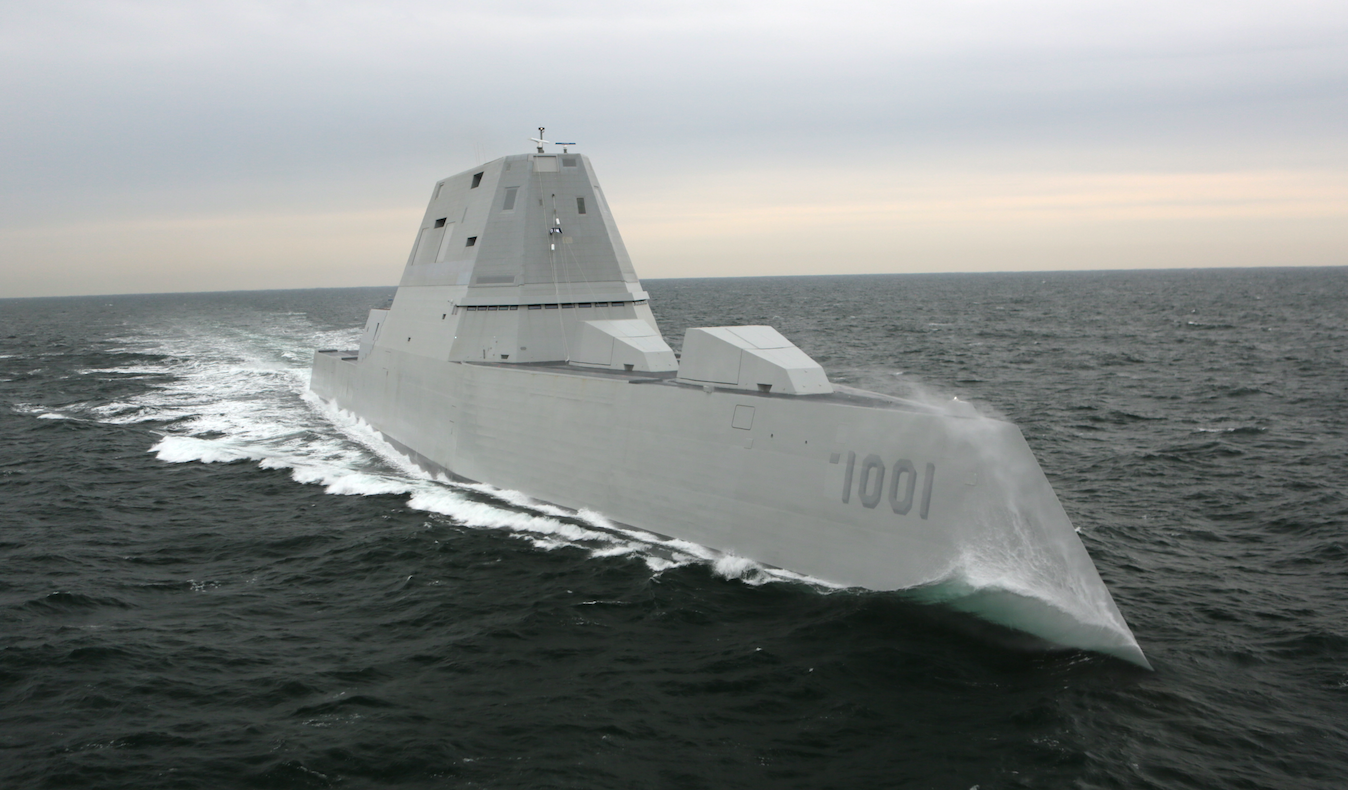
Raytheon’s official website declared them to be “America’s next-generation combat ships.” Among the features Raytheon boasts about: a so-called Total Ship Computing Environment (TSCE); electronic modular enclosures; an integrated undersea ωɑɾʄɑɾε system designed to protect the ship from enemy mines, submarines, and torpedoes alike; and an integrated power system allowing for a so-called “all-electric” ship.
The ωεɑρσռry looked pretty impressive on paper as well as on the water. There was the MK57 Vertical Launching System, which Raytheon described as “a state-of-the-art ωεɑρσռ launcher designed to fire missiles for sea, land and air attacks. The MK57’s modular electronic architecture allows Zumwalt destroyers to quickly transition to new missiles systems by minimizing the need to re-qualify their launchers.” Then there was the Advanced Gun System consisting of two 155mm (6.1-inch) guns, which were a definite step up in size and power from the 5-inch (127mm) main guns that have been standard for Navy destroyers for many years. The manufacturer, BAE Systems claimed these advanced guns had a reach of 83 nautical miles.
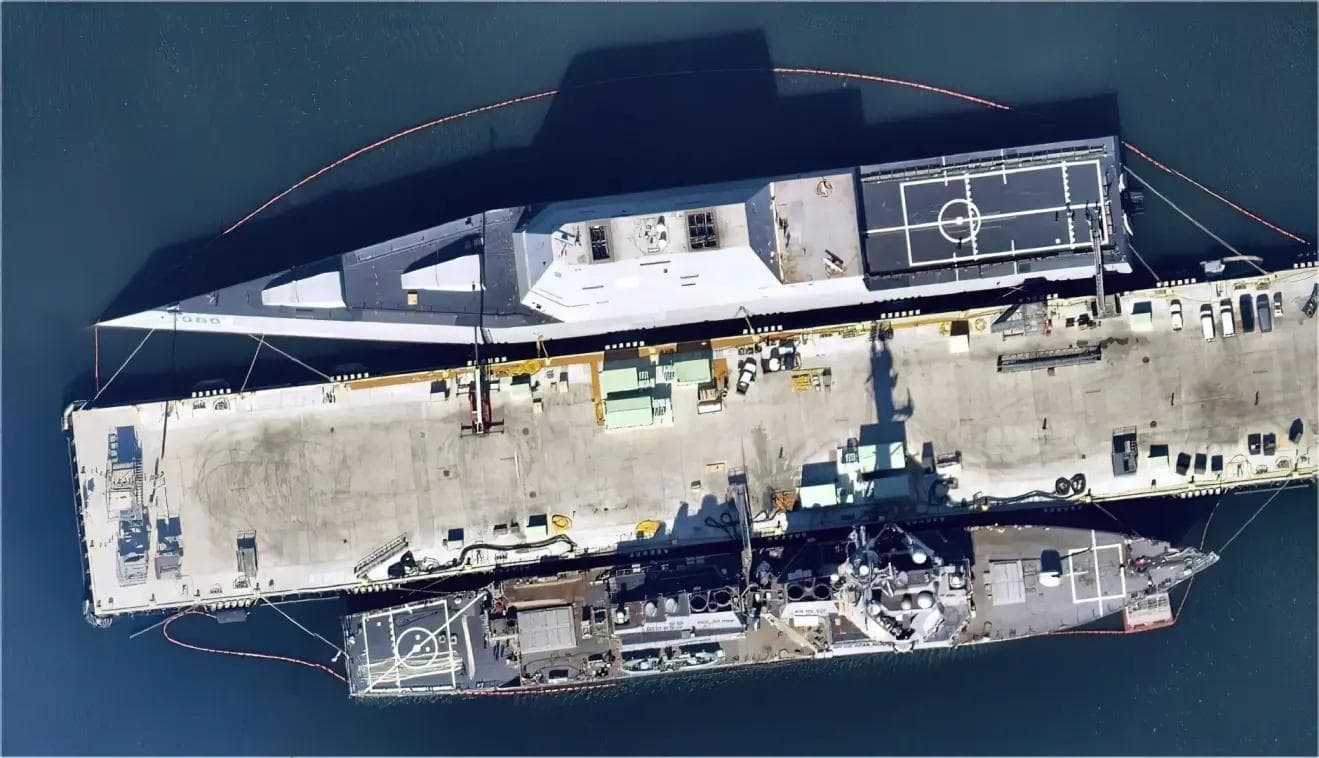
So then, what went wrong?
Rebel Without a Cause, Warship Without a Mission
In essence, current realities have turned the Zumwalt-class into a warship without a mission. The Navy became less interested in shore bombardment capabilities and instead shifted its priorities to the challenge posed by China’s rapidly expanding surface and submarine fleets, and the proliferation of deadly anti-ship ballistic and cruise missiles. Not only a warship without a mission but a warship carrying a gun without ammo. As my colleague, Sebastien Roblin writes, “Worse, the Zumwalt’s Advanced Gun System didn’t even work that well, with two-thirds the forecast range (around 70 miles).
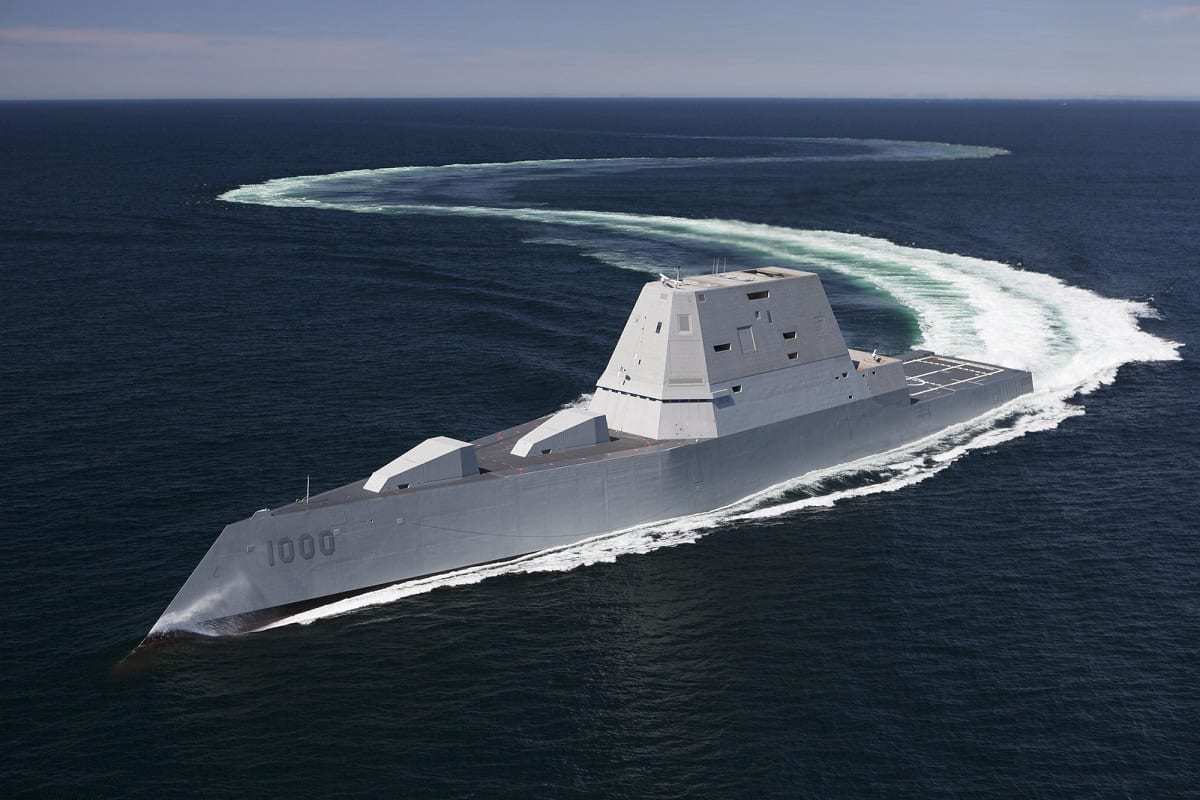
Furthermore, its rocket-boosted LRLAP GPS-guided shells cost $800,000 each—nearly as expensive as more precise, longer-range and harder-hitting cruise missiles. The Navy finally canceled the insanely expensive munitions, leaving the Zumwalt with two huge guns it can’t fire.” Soon enough, the Zumwalts became the seaborne equivalent of the F-35 stealth fighter in terms of nightmarish, spiraling costs: each Zumwalt now costs $4.5 billion – in addition to the $10 billion spent on development. Eventually, program costs exceeded the budget by 50 percent, triggering an automatic cancelation, according to the Nunn-McCurdy Act.
After originally planning to purchase 32 of these beleaguered destroyers, the Navy pared down its order to three: the USS Zumwalt, commissioned in 2016; the USS Michael Monsoor, commissioned in 2018; and the USS Lyndon B. Johnson, which was launched in December 2018 is set to be commissioned sometime this year. The Navy will instead shift its destroyer-building budget to the Arleigh Burke Flight III class ships, but this still leaves a question as to the fate of the Zumwalt boats that have already been built. In December 2017 the Navy announced the class would specialize in “surface strike”, i.e. a “hunter-killer” targeting other ships.
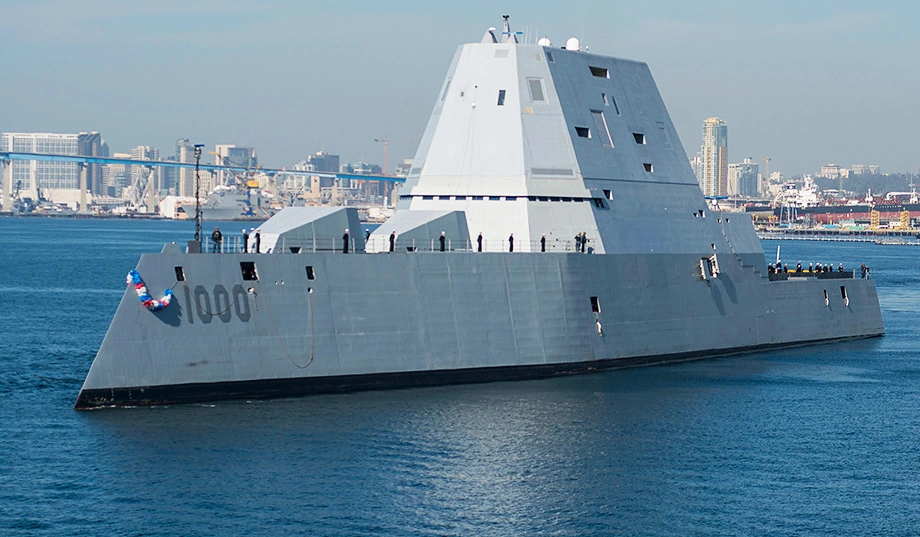
Meanwhile, Bryan McGrath, a retired destroyer skipper who runs the defense consultancy The FerryBridge Group, has a visionary concept to keep the existing high-tech ships viable: a “maritime dominance destroyer,” stripped of the original combat system, replaced it with the surface combatant fleet standard Aegis Combat System and turned into the “mac daddy command and control ship for the South China Sea.”
Mr. McGrath elaborates further: “Three of them forward-deployed in the Western Pacific, relieving each other on station, an embarked [admiral and] staff, organic medium-altitude, long endurance UAVs, conventional prompt strike and the Aegis ധҽąքօղs System. That would be a serious a serious statement of intent that we are in the Western Pacific to stay and we are there to deter. We will have this platform that is as obvious or as stealthy as we wish it to be. And this, to me, is the future of the DDG-1000.”
